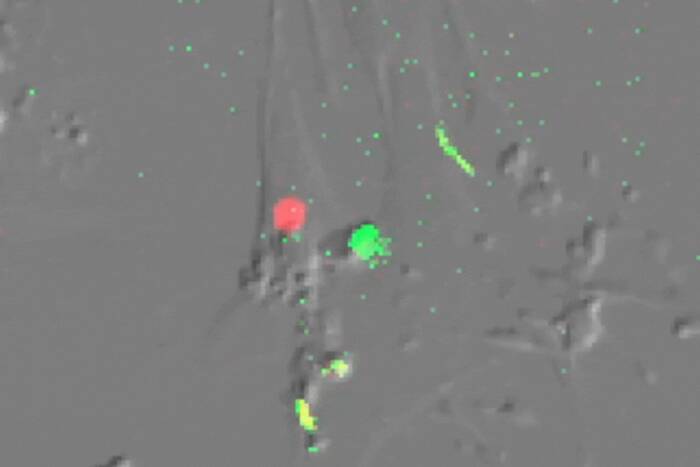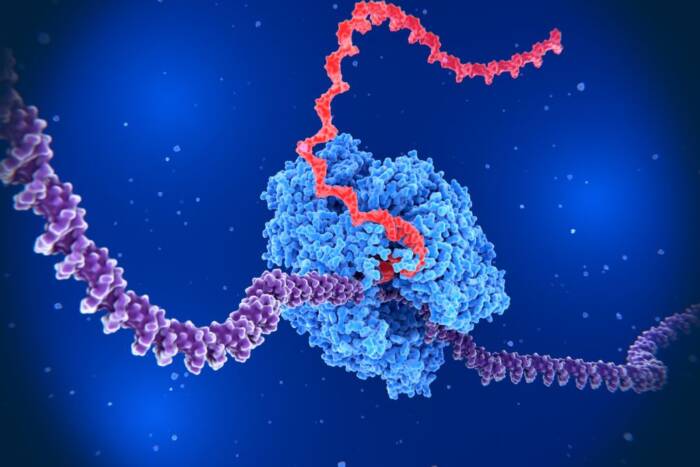Understanding Drive: Rockefeller researchers uncover the molecular mechanisms of sexual motivation
 For most people, sex is a complicated topic. A new book by RU Professor Donald Pfaff, however, is based on the idea that the primitive, biological side of sex is explainable–at least from a scientific point of view. Pfaff’s lab researches the neurobiological and molecular aspects of sexual motivation. In Drive (MIT Press), he shows that the biological basis for sex drive–one of the most primitive human instincts–is largely explained by mechanisms uncovered in animal brains that have not changed in millions of years of evolution.
For most people, sex is a complicated topic. A new book by RU Professor Donald Pfaff, however, is based on the idea that the primitive, biological side of sex is explainable–at least from a scientific point of view. Pfaff’s lab researches the neurobiological and molecular aspects of sexual motivation. In Drive (MIT Press), he shows that the biological basis for sex drive–one of the most primitive human instincts–is largely explained by mechanisms uncovered in animal brains that have not changed in millions of years of evolution.
“For the first time,” says Pfaff, “we are able to reason all the way from molecular genetics and cellular detail to an explanation of how hormones and environmental stimuli interact to control behavior.” (He carefully makes the distinction that he is not studying the culturally induced phenomenon of love; his lab looks at physiology and behavior, “not why you feel a certain way when you hear songs from when you were in high school.”)
Pfaff’s motivation for initiating this field of work came from wanting to understand more fully how the brain works. Because the brain is so complicated, he decided to concentrate on what he calls a single “analyzable” behavior. Looking at libido from a biologist’s perspective also made sense because sex drive is an “aspect of mental life closest to being dominated by biological determinants,” he says.
It’s also a good candidate for rigorous scientific analysis because it is present in other animals. (You can’t study music composition in lab rats, Pfaff observes.) All animals have basic drives that contribute to the survival of the individual and the species: The first, and most basic, is answering biological needs for the survival of the individual; second comes the biological drive to reproduce. Humans are no exception. Drive cites psychologist Abraham Maslow, who observed that people can turn their attention to the “higher motives” of love, altruism and intellectual pursuits only after their basic drives are met.
But where do these primal drives come from? A tremendous amount of genetic and neurobiological evidence forces the conclusion that in the evolutionary process, animals do not create whole new systems from scratch, but instead reuse the same materials inherited from common ancestors. Drive documents a large number of libido-related neurobiological, endocrine, physiological and molecular mechanisms that humans share with a variety of other animals. These similarities strongly suggest that the primitive aspects of libido in humans derive from what happens in other mammals. The burden of proof, Pfaff says, is on those who would claim that humans are unique. (Again, he cautions that his lab is looking only at the biological side of sexual desire, not the cultural factors that influence it.)
Classic research on motivational behavior shows that every drive has two components: one to arouse the brain and another to direct behavior. Some of these drives are controlled by hormones–chemicals produced in the body that circulate in the bloodstream and affect other organs. (In one study, increased levels of estrogen drove female rats to cross over an electrified grid to get to a male–not that different, Pfaff notes, from the “ridiculous” things college students will do to get next to each other on a weekend.) “Given that we can explain hormonal, neuronal and molecular bases of certain forms of animal reproductive behavior in considerable detail, we can infer that these investigations have a lot to do with the human mind and behavior,” he says.
The techniques of modern molecular biology allow researchers to move from the “big picture” of behavior to the microscopic view of genes, neurons and chemical reactions inside the body. One thing Pfaff’s lab looks at, for example, is the set of genes turned on in certain nerve cells when certain hormones make their way to the brain. The relationship of genes and hormones is intertwined. We are programmed to produce hormones at particular times, and conversely, sex hormones can turn on specific genes in particular neurons–a process important for producing normal reproductive behavior. The researchers in Pfaff’s lab knew that to understand the biological basis of libido, they had to take an interdisciplinary approach. By looking with morphological and electrophysiological methods, as well as at behavior, they made the first discovery of a complete neural circuit for a vertebrate animal’s behavior.
What was surprising–even to Pfaff, who was mentally prepared for the findings–was how exquisitely the molecular, physiological, behavioral and zoological results fit together. Pfaff figures that “this is the kind of multilevel approach you can do more successfully at Rockefeller than at other places.”
The phenomenon of sex drive, produced through the combination of endocrine, neuronal and molecular mechanisms, has clearly been geared toward survival and reproduction. In a way, feelings of lust make good evolutionary sense. “After all,” Pfaff notes, “if sex were not enjoyable, we might fail to do it.”


